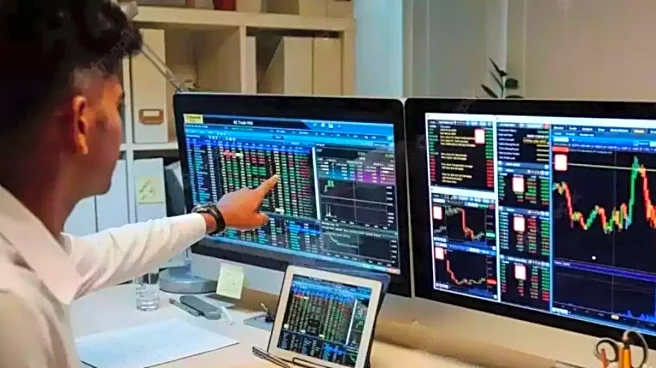It’s also the latest push by a major US carmaker to announce splashy domestic investments under pressure from President Donald Trump, who has wielded steep tariffs as a tool to curtail imports and bolster domestic manufacturing and jobs. In June, General Motors Co. announced a $4 billion investment in the US to boost production of gas-powered vehicles and reduce production in Mexico.
“We want to grow in the US with American-built products,” Chief Executive Officer Antonio Filosa said in a phone interview. “We share the president’s goal to bring back jobs in the United States, as we are doing, as we will do.”
Stellantis said the plan will add more than 5,000 jobs at factories in Illinois, Ohio, Indiana and Michigan.
Filosa declined to specify how much the investments could reduce Stellantis’ tariff exposure, which the company estimates will be about 1.5 billion euros ($1.7 billion) this year. But he said the plan will prompt Stellantis’ suppliers to build more components in the US, which could spur an additional 20,000 jobs, according to company estimates.
Bloomberg reported earlier this month that Stellantis was set to announce a significant investment in the US.
The plan includes introducing five new vehicles over the next four years, including two new nameplates, and making additional updates across its lineup of brands.
The automaker said it will invest $600 million to expand production of the Jeep Cherokee and Jeep Compass SUVs at its idled assembly plant in Belvidere, Illinois, in 2027, creating around 3,300 jobs.
The Belvidere plant will supply only the US market. The company’s plant in Toluca, Mexico, which currently makes the Cherokee and the Compass, will continue to do so; the Brampton, Canada, plant, which was originally scheduled to make a new version of the Compass, will no longer do so, the company said in an email.
The United Auto Workers Union hailed the Stellantis investment as a “major victory” for its members.
“Their decision today proves that targeted auto tariffs can, in fact, bring back thousands of good union jobs to the US,” said UAW President Shawn Fain. “Wall Street and supposed industry experts said this was impossible. But race to the bottom created by free trade is finally coming to an end.”
In January after meeting with Trump, Stellantis said that it would make a midsize pickup at the Belvidere plant. That vehicle is now being moved to a plant in Toledo, Ohio, and is set to start production in 2028.
It will also develop an all-new range-extended EV and a gas-powered SUV at its plant in Warren, Michigan, which has suffered layoffs in recent years.
Under Filosa, who was appointed to the top job earlier this year, Stellantis has sought to recalibrate investments across regions, with a particular emphasis on the crucial US business. Stellantis pushed aggressively to shift production and engineering operations to lower-cost countries like Mexico under former CEO Carlos Tavares. Filosa is now seeking to reverse those moves.
“The way we know that we can grow is to invest in the right technology, in the right products, on the right brands that we have, and that’s what we are doing,” Filosa said.
The company’s US shares rose 4.7% as of 7:25 p.m. in after-hours trading in New York. The stock had declined more than 33% this year through Tuesday’s close, compared with the S&P 500 Index’s 13% gain.
Read Also: Oil steadies as supply glut outlook, US-China tensions in focus
/images/ppid_59c68470-image-176049502554339848.webp)

/images/ppid_59c68470-image-176049019844896742.webp)
/images/ppid_59c68470-image-176049252778589107.webp)




/images/ppid_59c68470-image-176037261209457573.webp)
/images/ppid_59c68470-image-1760360037484804.webp)
/images/ppid_59c68470-image-176032505525874715.webp)
/images/ppid_59c68470-image-176034763190949204.webp)
/images/ppid_59c68470-image-176024253614771346.webp)